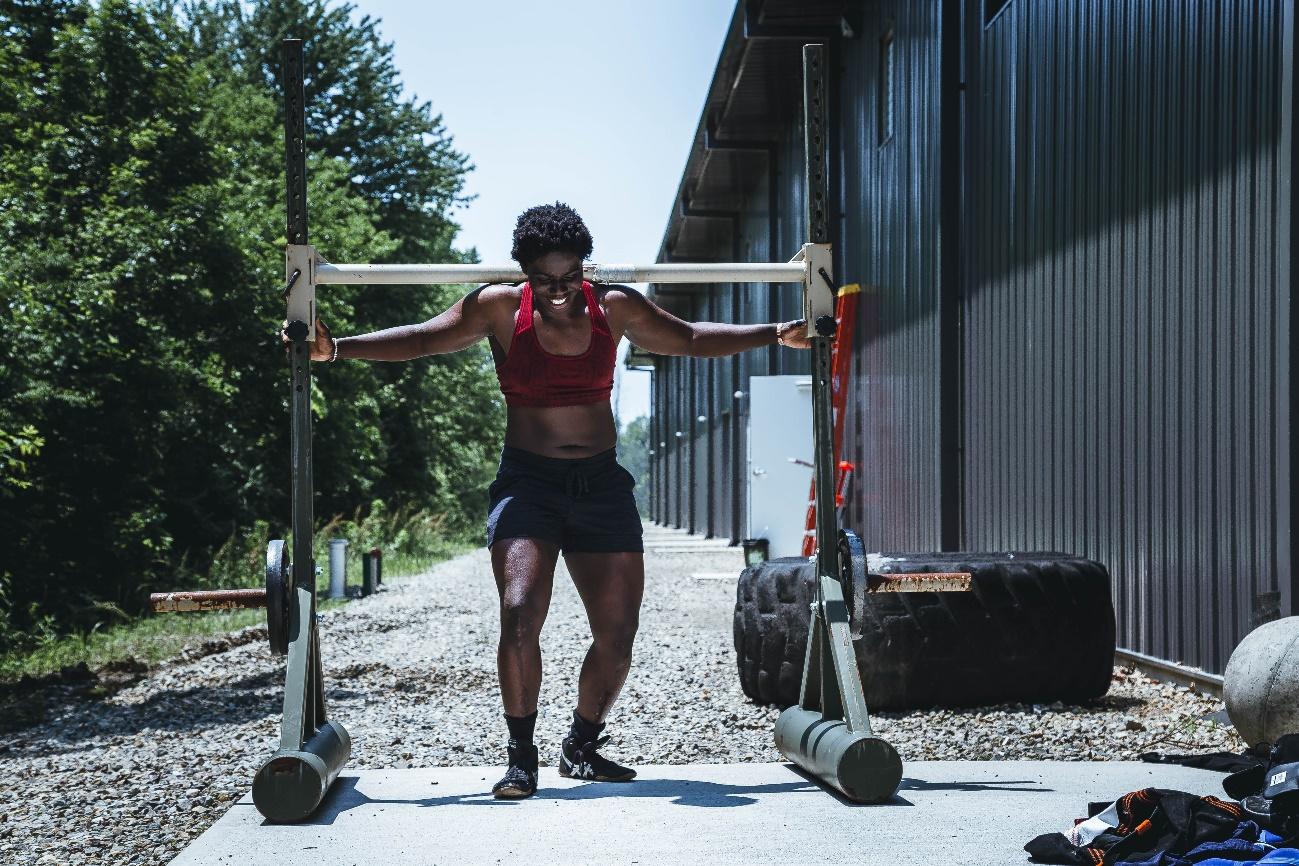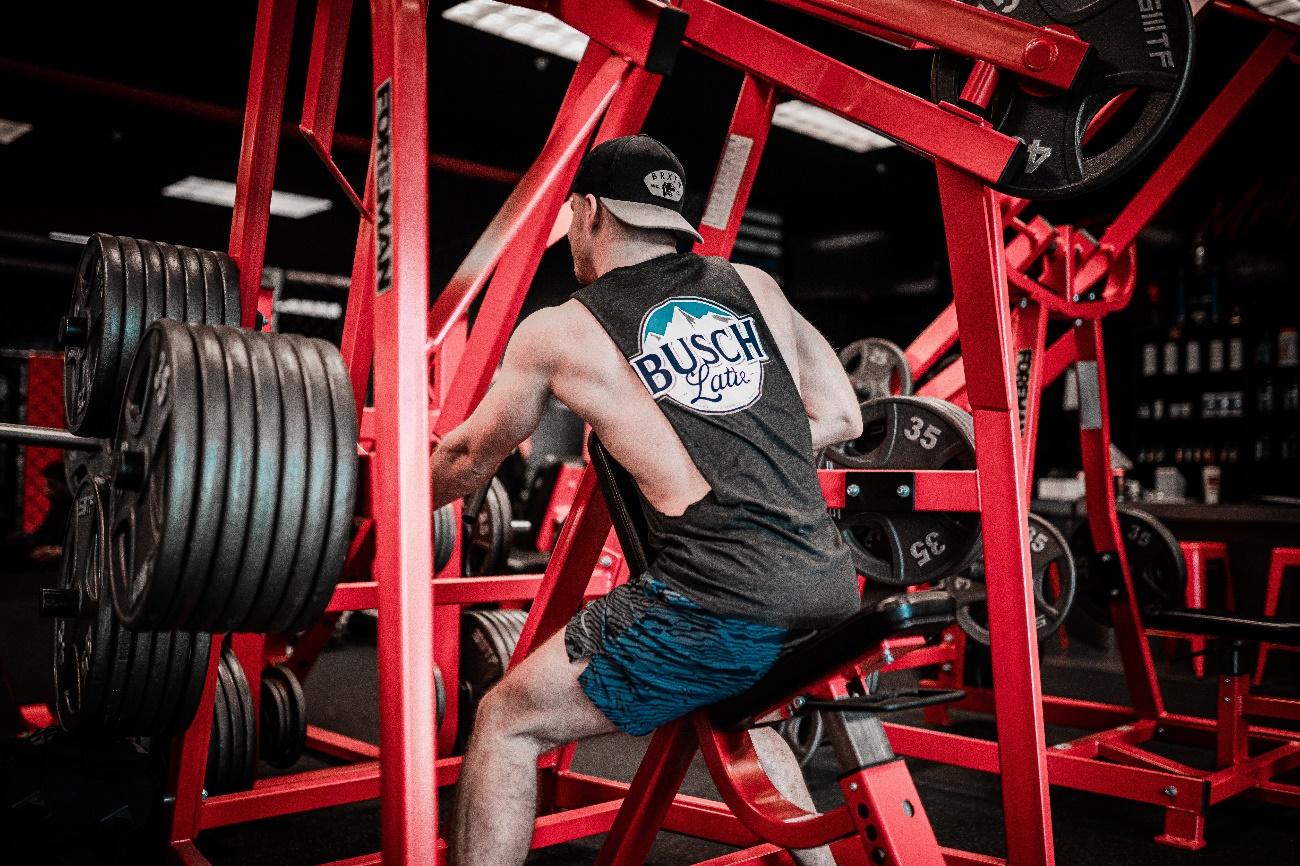17 de June de 2023
Benefits of Resistance resistance training
Resistance training is Medicine: Benefits of Resistance Training Cardiometabolic Health
Not long ago, resistance training was considered solely as an activity for exceptionally muscular men competing in weightlifting sports. The rest of the population saw no reason to engage in resistance training, and even high-performance athletes tended to avoid such sessions because they believed it hindered their athletic performance. The focus on combating sedentary lifestyles and improving overall health was primarily placed on endurance training, with little to no emphasis on the benefits of resistance training. Gradually, it has been recognized that resistance training is equal to or even superior to endurance training in improving body composition, athletic performance, and health.

Cardiovascular Health: Strong Muscles, Strong Heart.
A literature review conducted by Strasser and Schobersberger concluded that “resistance training is at least as effective as aerobic endurance training in reducing some of the major risk factors for cardiovascular diseases” (Strasser & Schobersberger, 2011). The benefits of resistance training impact the three key physiological factors associated with cardiovascular health: resting blood pressure, blood lipid profiles, and vascular condition (Westcott, 2012).
Resistance training can be an essential element in the control of hypertension and cardiovascular risk, as it produces acute reductions in blood pressure, known as post-exercise hypotension (Figueiredo et al., 2015). Some studies discuss the potential negative effect of resistance training on arterial stiffness, which would be associated with a disadvantage rather than a benefit of resistance training. However, there are many discrepancies among publications, with some systematic reviews concluding that resistance training does not harm cardiovascular health in terms of arterial stiffness alteration, but rather improves it (García-Mateo et al., 2020).
Metabolic Resistance: Diabetes, Cancer & More
At the metabolic level, resistance training leads to improvements in insulin resistance, or in other words, an increase in insulin sensitivity. It also improves glucose and lipid metabolism (Strasser & Pesta, 2013). resistance training enhances mitochondrial function in skeletal muscles and increases the expression of glucose transporter type 4, a glucose transporter in skeletal muscle, resulting in increased glucose uptake and glycogen synthesis in this tissue. The overall result is a decrease in blood glucose levels and a reduction in cellular lipid content, leading to better control of type 2 diabetes and other metabolic disorders that can lead to serious diseases.
Cancer is one of the most complex metabolic disorders, which makes finding a cure challenging. resistance training is particularly important for cancer patients or those who have survived cancer as it helps improve their muscle strength and preserve lean body mass, which is often at risk in this population (Padilha et al., 2017; Van Moll et al., 2016). When a person with cancer undergoes treatments to eliminate malignant cells, such as chemotherapy, they are better protected if they have engaged in or continue to participate in resistance training. This leads to a higher quality of life and better functional capacity compared to cancer patients undergoing treatment without appropriate resistance training (Norris et al., 2015; Steindorf et al., 2014). As a result, some studies indicate a 31% to 33% reduction in cancer mortality with proper resistance training (Hardee et al., 2014; Stamatakis et al., 2018). This strategy acts as a shield against cancer-related muscle dysfunction and cachexia (Prado et al., 2008), as well as reduces the side effects of necessary medication.
Mortality From All Causes
Resistance training is associated with a lower risk of mortality from all causes by reducing the risk factors for cardiovascular diseases (such as heart attacks, hypertension, etc.) and metabolic diseases (obesity, diabetes, cancer, etc.) (El-Kotob et al., 2020; Stamatakis et al., 2018). Engaging in any type of resistance training is linked to a 23% to 31% reduction in all-cause mortality (Dankel et al., 2016; Kraschnewski et al., 2016; Stamatakis et al., 2018). The reasons for this lower risk of mortality include improvements in health markers, such as blood pressure in the case of cardiovascular diseases (Saeidifard et al., 2019), or glycemic control in individuals with diabetes (Ishiguro et al., 2016).
Resistance Training Benefits for Body Composition

Immediate & Long-Term Aesthetics
Until relatively recently, endurance training was considered superior to resistance training for fat loss and improving body composition. However, scientific evidence shows that resistance training reduces abdominal fat, specifically visceral fat, increases lean mass, and prevents muscle loss (Hills et al., 2010; Strasser & Pesta, 2013). This makes the benefits of resistance training for body composition more appealing than those offered by endurance training.
Endurance training helps us burn calories, which is crucial for creating a calorie deficit and promoting fat loss, but that is its only benefit. In addition to the aforementioned benefits (fat loss and muscle retention), resistance training increases basal metabolic rate, potentially contributing to obesity prevention (Hunter et al., 2000). While one kilogram of muscle may not make a significant difference in basal metabolic rate, resistance training can help us gain many kilograms of muscle, prevent muscle loss, and avoid fat accumulation in its place.
As we age, resting metabolic rate decreases by 2%-3% per decade (Keys et al., 1973). Since resting metabolism accounts for about 65%-70% of daily calorie expenditure in sedentary individuals, resistance training is essential to prevent muscle loss, fat accumulation, and a decline in resting metabolic rate. Falling into this vicious cycle can greatly diminish our quality of life. It’s better not to enter that cycle, but if we do, resistance training can reverse the situation, creating a completely opposite scenario: more muscle mass, less fat, and a higher resting metabolic rate that helps us burn more calories. This combination is beneficial for both health and aesthetics..
Muscles Beyond Aesthetics
Beyond aesthetics, the muscle-to-fat ratio plays a crucial role in facilitating the development of various chronic diseases mentioned earlier, such as obesity, type 2 diabetes mellitus, and cardiovascular conditions (Aune et al., 2015). Muscle tissue is the primary site for glucose and triglyceride disposal, so the loss of muscle mass specifically increases the risk of glucose intolerance and associated health issues (Flack et al., 2011).
resistance training also decreases inflammation, likely as a reflection of changes in body composition (Strasser & Pesta, 2013). Since inflammatory mediators increase the risk of cardiovascular diseases, metabolic syndrome, and type 2 diabetes, the effect of resistance training in reducing these mediators would explain, at least partially, the lower mortality observed in individuals who engage in resistance training (Saeidifard et al., 2019).
Sarcopenia: The Beginning of Frailty
Muscle mass decreases between 3% and 8% per decade after the age of 30, with an average of approximately 0.2 kg of lean weight loss per year. Muscle loss increases between 5% and 10% per decade after the age of 50, with an average of approximately 0.4 kg per year after the fifth decade of life (Westcott, 2012). This age-related loss of muscle mass is known as sarcopenia. Resistance training is the best way to slow down this muscle loss that occurs with age, and it can even reverse it and help maintain or increase muscle mass (Talar et al., 2021).
Bones Also Matter
Bone strength is as important for health as muscle mass. resistance training is highly beneficial for increasing bone mineral density, especially during childhood, adolescence, and early adulthood. This is the period when we reach our peak bone mass, and from then on, it becomes increasingly important to engage in the right activities to preserve maximum bone mass. Osteoporosis is progressively increasing due to longer lifespans and reduced physical activity (Reginster & Burlet, 2006). Osteoporosis is characterized by a decrease in bone mass and an increased risk of fragility fractures (“Consensus Development Conference: Diagnosis, Prophylaxis, and Treatment of Osteoporosis,” 1993).
As we age, our bones weaken if we do not take any action, similar to the loss of strength and muscle mass. There are numerous cases where the level of bone fragility is such that we first break a leg bone and then fall, rather than the other way around. resistance training is a safe and cost-effective non-pharmacological strategy for preserving bone mass throughout life (Beck et al., 2017).
Activities such as jumping and weight-bearing exercises can improve bone health in adults by generating stimuli and promoting an osteogenic response in the bone (Turner & Robling, 2005). The mechanical stress exerted on the bones when the muscles contract stimulates the mechanisms that form and preserve bone. This enables older adults to avoid fractures during falls and, more importantly, to prevent falls because of extremely weak bones (Hong & Kim, 2018).
Die Young… The Later, The Better.
Resistance training helps our mitochondria “age better,” and if they are younger, we are younger. When we engage in strength activities, we enhance the quality and quantity of our mitochondria, which is associated with a younger biological age (Westcott, 2012). But what if I’m already older? resistance training can reverse gene expression by modifying mitochondrial characteristics, effectively turning back the clock on aging markers in our skeletal muscle (Melov et al., 2007). This benefit of resistance training goes beyond having fewer wrinkles on our faces; it involves having fewer wrinkles in our cells, which is vital for preventing various diseases and maintaining a higher quality of life.
Benefits of Resistance Training in Sports Performance

We are not discovering anything if we say that resistance training improves strength, power and muscle mass. What does escape some people is that resistance training is essential for virtually all sports. When it comes to running, resistance training will improve our running economy (Balsalobre-Fernandez et al., 2016), a determining factor in endurance sports and in any discipline that requires moving from side to side, such as soccer, basketball and many others you can think of. Running economy is the expenditure of oxygen produced by our body as we move at a given pace; it is like when we are told that a car consumes six liters of fuel per 100 kilometers.
If instead of consuming six liters per 100 kilometers it consumes five, it will be more efficient because we will run the same kilometers with less gasoline. That happens in the race, making us less tired doing the same thing, or we can run faster with the same fatigue we had before going slower. resistance training will make us hit a ball faster in baseball, hit a volleyball with more power in volleyball, jump higher to dunk in basketball or make an explosive change of direction to get away from an opponent in soccer. Strength is present in everything, and for that reason resistance training is practically mandatory in any discipline, not just in those that are purely strength-based.
resistance training leads to improvements in muscle power and strength through mechanisms such as an increase in voluntary activation of the trained musculature or changes that occur in the cross-sectional area of the muscle and fibers. These improvements are then transferred to athletic performance and to life, since, although we do not appreciate it when we are not older adults, there comes a point in life when lack of strength makes us lose our independence.
Dynapenia & Kratopenia, The Forgotten Ones
One of the benefits of resistance training that we have seen above is the prevention of sarcopenia, by maintaining the maximum possible muscle mass over the years. There are two terms that are even more important than sarcopenia and muscle mass: dynapenia and kratopenia (Lemus Barrios et al., 2020). Dynapenia refers to the loss of strength that occurs as we age and are able to apply less force. Kratopenia refers to the same, but in reference to muscle power, which is vital at all times of life.
What is your maximum squat lift? Maybe 180 kilos is the maximum weight you are able to move in a barbell back squat, which indicates that if you load the bar with 190 kg you will fail the lift. That same situation is what happens in older adults when they can’t get up from the couch, that’s the “190 kilos you can’t move”. The more strength we have, the more independence we will have when carrying shopping bags home, going up and down stairs and any activity that requires applying muscle contractions of a certain intensity. What do we do when we want to move more kilos in a squat? Right, do resistance training, so another benefit of resistance training is to be able to manage our body weight in any situation, that is, to have better muscle function (Syed-Abdul, 2021).
Kratopenia is what saves us from falling when we trip. Surely more than once you have tripped on the stairs at home, or on a curb, and you have quickly thrown your opposite leg and stabilized yourself. If that opposite leg doesn’t make it in time, the result is a fall to the ground, of lesser or greater severity. Imagine what a fall down the stairs means for an 80-year-old senior who also has fragile bones. It is clear: resistance training saves lives by preventing a drastic deterioration of strength and power. Our quality of life will be much better if we strength train at any stage of life, especially as we get older (Hart & Buck, 2019).
Not Getting Injured is Training Twice
The strength and conditioning coach has two key functions: to improve the athlete’s athletic performance and to prevent injuries. We have already seen that resistance training covers the first of the two functions by making the athlete faster, jumping higher and accelerating more throws. Another outstanding benefit of resistance training is that it prevents injuries, which makes it unquestionably mandatory to implement strength in training. The greater the support that protects the joints, the more we will take care of it.
A baseball pitcher repeats the same motion over and over every day. Appropriate resistance training will be aimed at performing complementary exercises to minimize pain and injuries in joints such as the shoulder, as occurs in sports that repeat similar gestures such as volleyball (Augustsson et al., 2011). In soccer, FIFA has specific resistance training programs to prevent injuries typical of that sport (Brito et al., 2010).
Without going deeper into each mechanism of injury, since we would never finish, we will see how “simple” it can be to solve a pain that can end in injury. Back pain is very common in the western population. There are several factors that can lead to lower back injury, but one of them is gluteal amnesia, which is nothing more than gluteus muscles that are asleep. By resistance training our glutes, this musculature “wakes up” and begins to support the lower spine (Jackson et al., 2011). When this happens, the lumbar musculature relaxes and the lumbar pain disappears. Something similar happens when we train the strength of the gluteus medius, which serves as a shield against knee injuries, decreasing its instability and associated pain (Rowe et al., 2007). It seems like magic, but resistance training is our great ally in preventing many sports injuries.
Mental Health Benefits of Resistance Training

The benefits of resistance training on mental health are extensive. Individuals who strength train may see reduced symptoms of anxiety and depression, due to direct physiological mechanisms and other external factors related to fatigue and pain. In addition, resistance training is itself capable of improving the cognitive abilities of those who do it. The end result is a more creative and efficient brain, in addition to the prevention of neurodegenerative diseases such as Alzheimer’s and Parkinson’s disease.
Cognitive Abilities: A More Active & Healthier Brain
The brain is plastic, as is our biceps, indicating that it can be modulated by training and nutrition, for better and for worse. resistance training has shown improvements in cognitive function, especially in populations with mild cognitive impairment (Chow et al., 2021; Mavros et al., 2017). This benefit of resistance training can be harnessed to have a more active and creative brain, and to prevent the aging of our most precious organ, thus reducing some neurodegenerative diseases such as Alzheimer’s or Parkinson’s.
Less Pain, Better Mental Health
A continuous and annoying pain is one of the most disabling situations that exist. People suffering from back pain, fibromyalgia or any ailment know firsthand that their chronic symptoms can lead to mental problems such as anxiety and depression. resistance training reduces symptoms of depression and anxiety in patients with fibromyalgia (Vilarino et al., 2021), reduces low back pain (Steele et al., 2020), and pain associated with different disorders such as arthritis. Once the pain decreases, the quality of life increases considerably and this helps to improve mental and social health.
General Mental Health
Another benefit of resistance training is its ability to improve mental health aspects such as anxiety and depression (Singh et al., 2005). These mental disturbances can occur through many different pathways, which can range from the chronic pain discussed in the previous section, to low self-esteem due to a low value attributed to our physique. The side effects of resistance training encompass many factors that are associated with mental health, such as the pain and self-esteem discussed above, in addition to many others. This makes available empirical evidence in favor of resistance training as an alternative and/or adjuvant therapy for depressive symptoms and other mental health parameters such as anxiety (Gordon et al., 2020).
What’s Strength & What Exercises are part of it?

Strength is the physical quality that determines the others (endurance, speed, flexibility and coordination) (Tous Fajardo & Robles García, 1999). resistance training is defined as an activity in which voluntary, brief and repeated contractions are produced against a resistance greater than that usually encountered in daily life (Li et al., 2015). Thus, climbing stairs is force, running is force, lifting the maximum weight in dead weight is force, climbing is force, throwing an object is force, and so we could go on indefinitely.
There can also be strength without external movement, such as when our musculature works to the maximum against an object that we cannot move (maximal isometric strength), or when the muscles work against a load that we can move, but we do not perform any external movement (submaximal isometric strength).
resistance training goes far beyond the use of machines or free weights. The exercises used can be of any type, whether they are lifts with free weights, exercises with body weight, exercises with alternative material such as elastic bands or TRX, etc. What should be kept in mind is that a moderate degree of effort, at least, will be what produces the significant improvements (Stamatakis et al., 2018). To reach that moderate or high effort, one or both of the following two factors need to be met: a high load or high speed.
Resistance Training Exercises
The list of resistance exercises that we can get to obtain the benefits of resistance training is counted by hundreds, so it is impossible to expose them all. The human being has basic patterns such as locomotion (walking, running, jumping and moving in any form), swinging (hanging between bars), twisting, throwing or kicking objects, as well as pushing, pulling and lifting external loads or one’s own body weight. Each movement pattern has many variations of exercises that can be performed with body weight, free weight equipment or specific machines.
Depending on the degree of intensity of the load and the volume used, the benefits of resistance training will be one or the other. Strength has different manifestations in which it can be shown, which are usually grouped into maximum strength, submaximal strength and explosive strength. The mixture of all this gives rise to all kinds of variants of exercises with which to make our muscles have to exert tension, thus generating a series of mechanisms that are the ones that give rise to all the benefits of resistance training discussed throughout the article.
Body Weight-Resistance Training Exercises
Body weight is an option available to us for resistance training anywhere. There are numerous exercises in which our musculature is confronted with the load of our own body weight. The best known are push-ups, pull-ups, pull-ups, squats, abdominal planks, lunges, etc. If we are looking for a higher speed workout, we can use our body weight to train reactive strength and explosive strength. In the first case there is a previous countermovement, such as jumping several hurdles without a pause between jumps. The second case, explosive strength, is trained without countermovement, being able to perform starts from blocks or jumps from a standing position.
To make use of body weight there are sports equipment such as suspension training ropes (TRX), different types of bars and any element that we can use to hang or push our body weight. Calisthenics training is full of exercises with body weight, such as parallel bottoms or advanced body control exercises such as full planche, front lever, dragon flag and many others.
External Load Resistance Training Exercises
There are many exercises where the body weight load itself is not enough to intensely stimulate the musculature. Air squats are an example of this because they require the addition of an external load, whether in the form of a barbell, dumbbell, weighted vest or any other material. resistance training with free weights can encompass multi-joint or mono-joint exercises. In the first group, the exercises involve several joints, and are usually those used to work with high loads.
Squats, deadlifts, hip thrusts, military presses, bench presses and barbell rowing are the basic multi-joint strength exercises performed to improve maximal or submaximal strength, although if they are performed with low loads and speed is increased, we can work more on the explosive part of strength. Within this more explosive manifestation, in which the speed of the movement is increased, are the Olympic exercises, such as the loaded and the pull-up, as well as all its variants. Mono-joint exercises with free weights are used to focus more on a specific muscle group. Examples of these types of exercises are the biceps curl, French press, heel raises for calf training, etc.
Resistance Training Exercises With Specific Machines
The third group in which we can include resistance training exercises are the machines designed to attack at different angles to each muscle group. There are machines of all types, being the classic machines of commercial gyms such as leg machines (leg extension, leg flexion, press, pull-ups…); machines focused on pull-ups (pull-ups and rows of all types); machines designed for push-ups (chest presses, triceps pull-ups…); and other machines to train the abdominals and forearms.
There is another type of machines less known in commercial gyms, but widely used in elite performance centers, called isoinertial machines. These machines arose to solve the problem that astronauts had to train without gravity. Its mechanism makes us who generate inertia and we have to brake and accelerate this inertia, thus obtaining a great resistance training.
How To Train Strength & What’s The Necessary Amount to Obtain The Benefits of Resistance Training?

The scientific literature has numerous systematic reviews that have tried to clarify what is the dose of resistance training necessary to obtain maximum benefits. However, their results are very heterogeneous because variables such as intensity, volume or frequency depend on the level of each person, age, gender, the objective sought and a long list of other factors. This makes it practically impossible to give general data that can cover the entire population.
To this must be added that most of the evidence of the benefits of resistance training has focused on testing the effect of aerobic exercise, with fewer studies having done the same with resistance training (Saeidifard et al., 2019). One of the latest scientific publications that encompasses all the quality studies to date on resistance training and health, suggests that we should participate at least two days a week in strength sessions for a significant reduction in the risk of all-cause mortality, an improvement in muscle strength and a higher quality of life (El-Kotob et al., 2020). This recommendation is supported by the World Health Organization (WHO), which recommends at least two strength sessions per week, in addition to other aerobic activities.
Results from the scientific literature indicate an “inverted U-shaped” dose-response relationship between resistance training and all-cause mortality (Saeidifard et al., 2019). This finding determines that the benefits of resistance training on overall health grow exponentially as we move from zero to the point at which we get the maximum benefits from resistance training, which would be the highest peak of the “inverted U”. From there, the association between resistance training and its benefits can become less and less by causing adverse effects on all branches of health: physical, social and mental. Therefore, more resistance training is not better, but better resistance training is better.
Joaquín Vico Plaza
References
Augustsson, S., Augustsson, J., Thomeé, R., Karlsson, J., Eriksson, B., & Svantesson, U. (2011). Performance Enhancement following a Strength and Injury Prevention Program: A 26-Week Individualized and Supervised Intervention in Adolescent Female Volleyball Players. Http://Dx.Doi.Org/10.1260/1747-9541.6.3.399, 6(3), 399–417. https://doi.org/10.1260/1747-9541.6.3.399
Aune, D., Norat, T., Leitzmann, M., Tonstad, S., & Vatten, L. J. (2015). Physical activity and the risk of type 2 diabetes: a systematic review and dose-response meta-analysis. European Journal of Epidemiology, 30(7), 529–542. https://doi.org/10.1007/S10654-015-0056-Z
Balsalobre-Fernández, C., Santos-Concejero, J., & Grivas, G. V. (2016). Effects of resistance training on Running Economy in Highly Trained Runners: A Systematic Review With Meta-Analysis of Controlled Trials. Journal of Strength and Conditioning Research, 30(8), 2361–2368. https://doi.org/10.1519/JSC.0000000000001316
Beck, B. R., Daly, R. M., Singh, M. A. F., & Taaffe, D. R. (2017). Exercise and Sports Science Australia (ESSA) position statement on exercise prescription for the prevention and management of osteoporosis. Journal of Science and Medicine in Sport, 20(5), 438–445. https://doi.org/10.1016/J.JSAMS.2016.10.001
Brito, J., Figueiredo, P., Fernandes, L., Seabra, A., Soares, J. M., Krustrup, P., & Rebelo, A. (2010). Isokinetic strength effects of FIFA’s "The 11+" injury prevention training programme. Isokinetics and Exercise Science, 18(4), 211–215. https://doi.org/10.3233/IES-2010-0386
Chow, Z. S., Moreland, A. T., Macpherson, H., & Teo, W. P. (2021). The Central Mechanisms of Resistance Training and Its Effects on Cognitive Function. Sports Medicine 2021 51:12, 51(12), 2483–2506. https://doi.org/10.1007/S40279-021-01535-5
Consensus development conference: diagnosis, prophylaxis, and treatment of osteoporosis. (1993). The American Journal of Medicine, 94(6), 646–650. https://doi.org/10.1016/0002-9343(93)90218-E
Dankel, S. J., Loenneke, J. P., & Loprinzi, P. D. (2016). Dose-dependent association between muscle-strengthening activities and all-cause mortality: Prospective cohort study among a national sample of adults in the USA. Archives of Cardiovascular Diseases, 109(11), 626–633. https://doi.org/10.1016/J.ACVD.2016.04.005
El-Kotob, R., Ponzano, M., Chaput, J. P., Janssen, I., Kho, M. E., Poitras, V. J., Ross, R., Ross-White, A., Saunders, T. J., & Giangregorio, L. M. (2020). Resistance training and health in adults: an overview of systematic reviews. Applied Physiology, Nutrition, and Metabolism = Physiologie Appliquee, Nutrition et Metabolisme, 45(10), S165–S179. https://doi.org/10.1139/APNM-2020-0245/SUPPL_FILE/APNM-2020-0245SUPPLA.DOCX
Figueiredo, T., Rhea, M. R., Peterson, M., Miranda, H., Bentes, C. M., MacHado De Ribeiro Dos Reis, V., & Simao, R. (2015). Influence of number of sets on blood pressure and heart rate variability after a resistance training session. Journal of Strength and Conditioning Research, 29(6), 1556–1563. https://doi.org/10.1519/JSC.0000000000000774
Flack, K. D., Davy, K. P., Hulver, M. W., Winett, R. A., Frisard, M. I., & Davy, B. M. (2011). Aging, Resistance Training, and Diabetes Prevention. Journal of Aging Research, 2011. https://doi.org/10.4061/2011/127315
García-Mateo, P., García-De-alcaraz, A., Rodríguez-Peréz, M. A., & Alcaraz-Ibáñez, M. (2020). Effects of Resistance Training on Arterial Stiffness in Healthy People: A Systematic Review. Journal of Sports Science & Medicine, 19(3), 444. /pmc/articles/PMC7429424/
Gordon, B. R., McDowell, C. P., Lyons, M., & Herring, M. P. (2020). Resistance exercise training for anxiety and worry symptoms among young adults: a randomized controlled trial. Scientific Reports, 10(1). https://doi.org/10.1038/S41598-020-74608-6
Hardee, J. P., Porter, R. R., Sui, X., Archer, E., Lee, I. M., Lavie, C. J., & Blair, S. N. (2014). The effect of resistance exercise on all-cause mortality in cancer survivors. Mayo Clinic Proceedings, 89(8), 1108–1115. https://doi.org/10.1016/J.MAYOCP.2014.03.018
Hart, P. D., & Buck, D. J. (2019). The effect of resistance training on health-related quality of life in older adults: Systematic review and meta-analysis. Health Promotion Perspectives, 9(1), 1. https://doi.org/10.15171/HPP.2019.01
Hills, A. P., Shultz, S. P., Soares, M. J., Byrne, N. M., Hunter, G. R., King, N. A., & Misra, A. (2010). Resistance training for obese, type 2 diabetic adults: a review of the evidence. Obesity Reviews : An Official Journal of the International Association for the Study of Obesity, 11(10), 740–749. https://doi.org/10.1111/J.1467-789X.2009.00692.X
Hong, A. R., & Kim, S. W. (2018). Effects of Resistance Exercise on Bone Health. Endocrinology and Metabolism, 33(4), 435. https://doi.org/10.3803/ENM.2018.33.4.435
Hunter, G. R., Wetzstein, C. J., Fields, D. A., Brown, A., & Bamman, M. M. (2000). Resistance training increases total energy expenditure and free-living physical activity in older adults. Journal of Applied Physiology (Bethesda, Md. : 1985), 89(3), 977–984. https://doi.org/10.1152/JAPPL.2000.89.3.977
Ishiguro, H., Kodama, S., Horikawa, C., Fujihara, K., Hirose, A. S., Hirasawa, R., Yachi, Y., Ohara, N., Shimano, H., Hanyu, O., & Sone, H. (2016). In Search of the Ideal Resistance Training Program to Improve Glycemic Control and its Indication for Patients with Type 2 Diabetes Mellitus: A Systematic Review and Meta-Analysis. Sports Medicine (Auckland, N.Z.), 46(1), 67–77. https://doi.org/10.1007/S40279-015-0379-7
Jackson, J. K., Shepherd, T. R., & Kell, R. T. (2011). The influence of periodized resistance training on recreationally active males with chronic nonspecific low back pain. Journal of Strength and Conditioning Research, 25(1), 242–251. https://doi.org/10.1519/JSC.0B013E3181B2C83D
Keys, A., Taylor, H. L., & Grande, F. (1973). Basal metabolism and age of adult man. Metabolism, 22(4), 579–587. https://doi.org/10.1016/0026-0495(73)90071-1
Kraschnewski, J. L., Sciamanna, C. N., Poger, J. M., Rovniak, L. S., Lehman, E. B., Cooper, A. B., Ballentine, N. H., & Ciccolo, J. T. (2016). Is resistance training associated with mortality benefits? A 15year cohort study of US older adults. Preventive Medicine, 87, 121–127. https://doi.org/10.1016/J.YPMED.2016.02.038
Lemus Barrios, G. A., Morales Benavidez, D. C., López Salazar, A. M., Henao, V., & González-Robledo, G. (2020). Evaluación de la fragilidad en la enfermedad cardiovascular: Un reto necesario. Revista Colombiana de Cardiología, 27(4), 283–293. https://doi.org/10.1016/J.RCCAR.2019.12.015
Li, Y., Hanssen, H., Cordes, M., Rossmeissl, A., Endes, S., & Schmidt-Trucksäss, A. (2015). Aerobic, resistance and combined exercise training on arterial stiffness in normotensive and hypertensive adults: A review. European Journal of Sport Science, 15(5), 443–457. https://doi.org/10.1080/17461391.2014.955129
Mavros, Y., Gates, N., Wilson, G. C., Jain, N., Meiklejohn, J., Brodaty, H., Wen, W., Singh, N., Baune, B. T., Suo, C., Baker, M. K., Foroughi, N., Wang, Y., Sachdev, P. S., Valenzuela, M., & Fiatarone Singh, M. A. (2017). Mediation of Cognitive Function Improvements by Strength Gains After Resistance Training in Older Adults with Mild Cognitive Impairment: Outcomes of the Study of Mental and Resistance Training. Journal of the American Geriatrics Society, 65(3), 550–559. https://doi.org/10.1111/JGS.14542
Melov, S., Tamopolsky, M. A., Bechman, K., Felkey, K., & Hubbard, A. (2007). Resistance Exercise Reverses Aging in Human Skeletal Muscle. PLoS ONE, 2(5), 465. https://doi.org/10.1371/JOURNAL.PONE.0000465
Norris, M. K., Bell, G. J., North, S., & Courneya, K. S. (2015). Effects of resistance training frequency on physical functioning and quality of life in prostate cancer survivors: a pilot randomized controlled trial. Prostate Cancer and Prostatic Diseases, 18(3), 281–287. https://doi.org/10.1038/PCAN.2015.28
Padilha, C. S., Marinello, P. C., Galvão, D. A., Newton, R. U., Borges, F. H., Frajacomo, F., & Deminice, R. (2017). Evaluation of resistance training to improve muscular strength and body composition in cancer patients undergoing neoadjuvant and adjuvant therapy: a meta-analysis. Journal of Cancer Survivorship : Research and Practice, 11(3), 339–349. https://doi.org/10.1007/S11764-016-0592-X
Prado, C. M., Lieffers, J. R., McCargar, L. J., Reiman, T., Sawyer, M. B., Martin, L., & Baracos, V. E. (2008). Prevalence and clinical implications of sarcopenic obesity in patients with solid tumours of the respiratory and gastrointestinal tracts: a population-based study. The Lancet. Oncology, 9(7), 629–635. https://doi.org/10.1016/S1470-2045(08)70153-0
Reginster, J. Y., & Burlet, N. (2006). Osteoporosis: a still increasing prevalence. Bone, 38(2 Suppl 1), 4–9. https://doi.org/10.1016/J.BONE.2005.11.024
Rowe, J., Shafer, L., Kelley, K., West, N., Dunning, T., Smith, R., Mattson, D. J., Mack, J., Schenectady, A., & York, N. (2007). Hip Strength and Knee Pain in Females. North American Journal of Sports Physical Therapy : NAJSPT, 2(3), 164. /pmc/articles/PMC2953297/
Saeidifard, F., Medina-Inojosa, J. R., West, C. P., Olson, T. P., Somers, V. K., Bonikowske, A. R., Prokop, L. J., Vinciguerra, M., & Lopez-Jimenez, F. (2019). The association of resistance training with mortality: A systematic review and meta-analysis. European Journal of Preventive Cardiology, 26(15), 1647–1665. https://doi.org/10.1177/2047487319850718
Singh, N. A., Stavrinos, T. M., Scarbek, Y., Galambos, G., Liber, C., & Singh, M. A. F. (2005). A randomized controlled trial of high versus low intensity weight training versus general practitioner care for clinical depression in older adults. The Journals of Gerontology. Series A, Biological Sciences and Medical Sciences, 60(6), 768–776. https://doi.org/10.1093/GERONA/60.6.768
Stamatakis, E., Lee, I. M., Bennie, J., Freeston, J., Hamer, M., O’Donovan, G., Ding, D., Bauman, A., & Mavros, Y. (2018). Does Strength-Promoting Exercise Confer Unique Health Benefits? A Pooled Analysis of Data on 11 Population Cohorts With All-Cause, Cancer, and Cardiovascular Mortality Endpoints. American Journal of Epidemiology, 187(5), 1102–1112. https://doi.org/10.1093/AJE/KWX345
Steele, J., Bruce-Low, S., Smith, D., Jessop, D., & Osborne, N. (2020). Isolated Lumbar Extension Resistance Training Improves Strength, Pain, and Disability, but Not Spinal Height or Shrinkage (“Creep”) in Participants with Chronic Low Back Pain. Cartilage, 11(2), 160–168. https://doi.org/10.1177/1947603517695614
Steindorf, K., Schmidt, M. E., Klassen, O., Ulrich, C. M., Oelmann, J., Habermann, N., Beckhove, P., Owen, R., Debus, J., Wiskemann, J., & Potthoff, K. (2014). Randomized, controlled trial of resistance training in breast cancer patients receiving adjuvant radiotherapy: results on cancer-related fatigue and quality of life. Annals of Oncology : Official Journal of the European Society for Medical Oncology, 25(11), 2237–2243. https://doi.org/10.1093/ANNONC/MDU374
Strasser, B., & Pesta, D. (2013). Resistance training for diabetes prevention and therapy: experimental findings and molecular mechanisms. BioMed Research International, 2013. https://doi.org/10.1155/2013/805217
Strasser, B., & Schobersberger, W. (2011). Evidence for Resistance Training as a Treatment Therapy in Obesity. Journal of Obesity, 2011. https://doi.org/10.1155/2011/482564
Syed-Abdul, M. M. (2021). Benefits of Resistance Training in Older Adults. Current Aging Science, 14(1), 5–9. https://doi.org/10.2174/1874609813999201110192221
Talar, K., Hernández‐Belmonte, A., Vetrovsky, T., Steffl, M., Kałamacka, E., & Courel‐ibáñez, J. (2021). Benefits of Resistance Training in Early and Late Stages of Frailty and Sarcopenia: A Systematic Review and Meta-Analysis of Randomized Controlled Studies. Journal of Clinical Medicine, 10(8). https://doi.org/10.3390/JCM10081630
Tous Fajardo, Julio., & Robles García, J. (1999). Nuevas tendencias en fuerza y musculación. https://www.casadellibro.com/libro-nuevas-tendencias-en-fuerza-y-musculacion/9788425513350/719601
Turner, C. H., & Robling, A. G. (2005). Mechanisms by which exercise improves bone strength. Journal of Bone and Mineral Metabolism, 23 Suppl(SUPPL. 1), 16–22. https://doi.org/10.1007/BF03026318
Van Moll, C. C. A., Schep, G., Vreugdenhil, A., Savelberg, H. H. C. M., & Husson, O. (2016). The effect of training during treatment with chemotherapy on muscle strength and endurance capacity: A systematic review. Acta Oncologica (Stockholm, Sweden), 55(5), 539–546. https://doi.org/10.3109/0284186X.2015.1127414
Vilarino, G. T., Andreato, L. V., de Souza, L. C., Branco, J. H. L., & Andrade, A. (2021). Effects of resistance training on the mental health of patients with fibromyalgia: a systematic review. Clinical Rheumatology, 40(11), 4417–4425. https://doi.org/10.1007/S10067-021-05738-Z/METRICS
Westcott, W. L. (2012). Resistance training is medicine: Effects of resistance training on health. Current Sports Medicine Reports, 11(4), 209–216. https://doi.org/10.1249/JSR.0B013E31825DABB8

